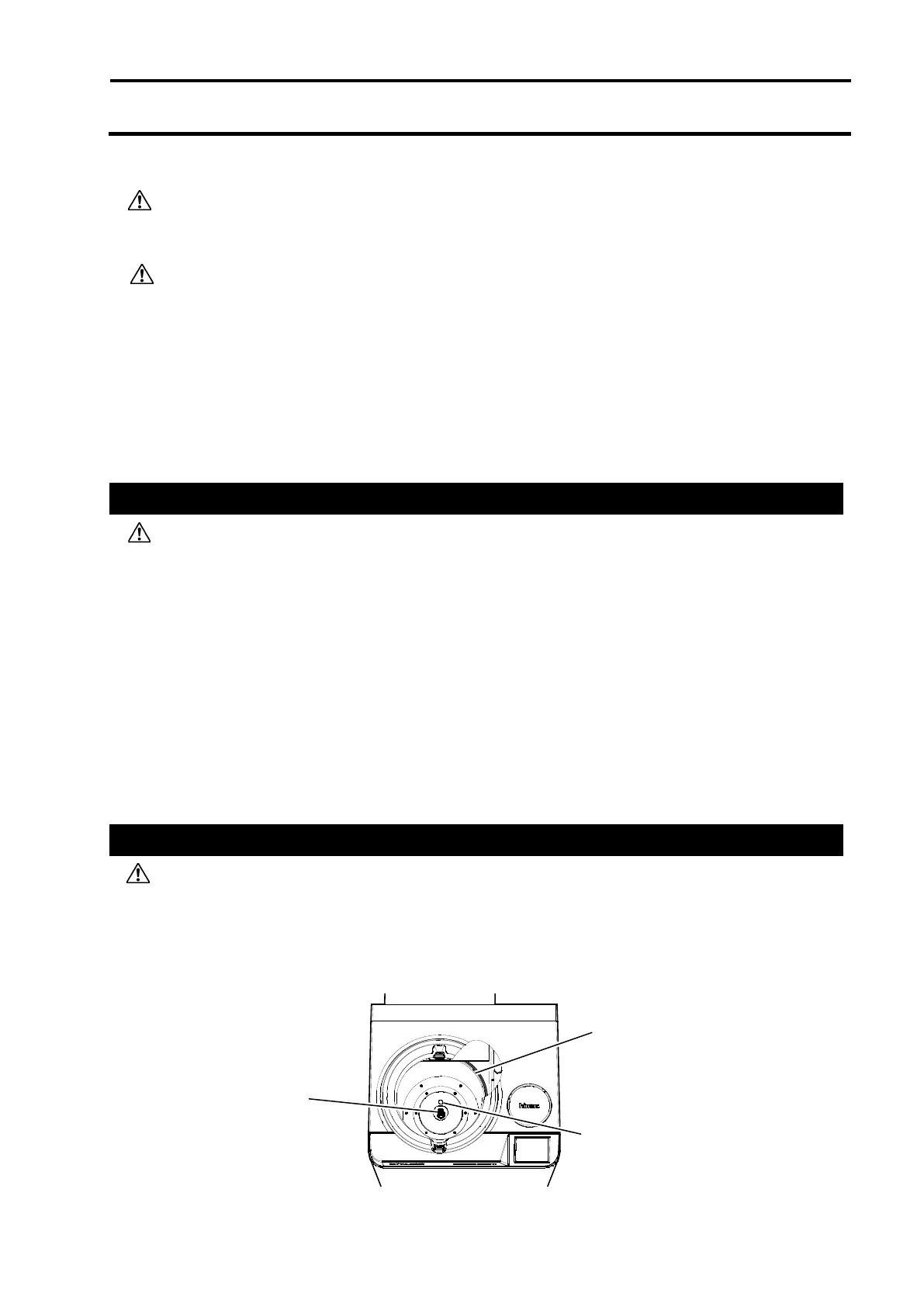4-1 Rotor Chamber
4-2 Drive Shaft (Crown)
This centrifuge does not require complicated maintenance and inspection. For longer and safe use of
this centrifuge without trouble, observe the following instructions.
CAUTION: Using cleaning or sterilization method other than recommended in this instruction
manual may cause corrosion or deterioration of this centrifuge. Refer to chemical
resistance chart attached to the rotor or contact Hitachi Koki.
CAUTION: For sterilization of the surface of the centrifuge and the rotor chamber, wipe them
with a cloth dampened with 70% ethanol. Using the method other than the above
method might cause corrosion or deterioration of the centrifuge. Refer to the
chemical resistance chart provided with the rotor, or contact Hitachi Koki.
While we recommend that 70% ethanol is used for sterilization, no guarantee of
sterility or disinfection is expressed or implied. When sterilization or disinfection is a
concern, consult your laboratory safety officer regarding proper methods to use.
For information on the maintenance of rotors and tubes, see rotor instruction manual and “ROTORS,
TUBES, BOTTLES AND CAPS (Part No.S999204)”.
CAUTION: Do not pour any solution such as water, detergent and disinfectant directly into the
rotor chamber. Otherwise, the bearings of the drive unit may be corroded or
deteriorated.
To maintain the rotor chamber, follow the instructions given below:
(1) When the ultracentrifuge is not in use, keep the rotor chamber ventilated.
(2) If the bowl is moist, wipe it with a clean, dry cloth or sponge.
(3) If the rotor chamber is dirty, wipe it with a clean cloth or sponge dampened with a diluted solution of
mild, non-alkaline detergent. While doing this, be careful not to touch the window of the
temperature sensor.
(4) If the door seal o-ring is dusty or scratched, high vacuum level will not be obtainable. Always keep
the door seal o-ring clean. When the ultracentrifuge is used frequently, take out the door seal o-ring
and wipe it with a clean, soft cloth and then put a light coat of vacuum grease on it every three to
four months (ordinarily, once a year). If the door seal o-ring is damaged, replace it. Wipe the groove
for the door seal o-ring with a clean, soft cloth dampened with alcohol or a similar solvent.
CAUTION: Clean the inside of the drive hole (crown hole) of the rotor and the surface of the
drive shaft (crown) of the centrifuge once a month. If the drive hole or the drive
shaft is stained or any foreign matter is adhered, the rotor may be improperly
installed and come off during operation.
This part is very important because the rotor is mounted on it and the crown transmits driving force to
the rotor. Before mounting a rotor, wipe the outer surface of the crown with a soft cloth dampened
with water sufficiently.
4-2

